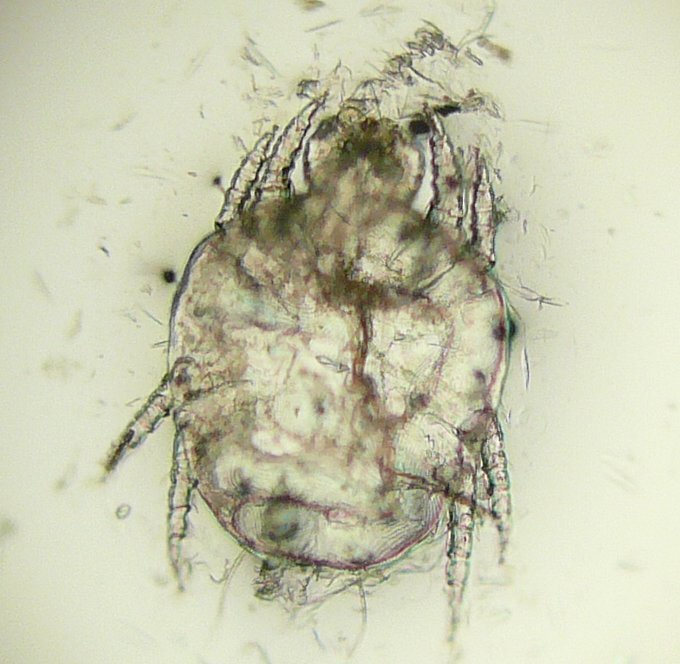
Cheyletiella are small mites that look to the naked eye like flakes of dandruff.
They live in the coats of domestic pets and love to chomp away at the top layer of skin cells. Their physical appearance in the fur gives these mites their rather apt nickname of “walking dandruff.”
They are easily passed between animals and are commonly among animals kept together such as in pet shops or puppy farms. Cheyletiella prefer to live on cats, dogs and rabbits, but are up for a challenge and will bite people if given the chance.
Typically people get bites on their forearms and chests, where they have hugged their pet against them. Signs of this are raised, red, itchy lumps on the skin. But don’t worry — Cheyletiella are easily killed by spraying the pet and his bedding, and once the source of infection is gone, there are no lingering effects.
Symptoms
Cheyletiella is a satisfying condition to treat because, when you’re using a piece of tape and a microscope, it’s possible to make a diagnosis then and there.
Suspicions are raised by seeing an itchy pet with an unkempt-looking coat flecked with white flakes. If you look carefully, sometimes you can even see the flakes moving.
These pets are usually very itchy and love nothing better than to sit down for a good scratch. The skin sometimes has small, red raised areas where the mites have bitten, and the coat is scattered with flakes that look like dandruff but are in fact Cheyletiella mites.
Causes
The whole of a Cheyletiella life cycle can take place on one pet, from laying eggs to larvae hatching to the adult developing. It is a surface feeder, which means that it likes to live off of flakes of shed skin, but its presence irritates the pet’s skin.
Diagnosis
I keep a roll of clear sticky tape in my clinic (hidden away so it doesn’t get used for other purposes).
Using a 6-inch length of tape, I press the adhesive side repeatedly to the pet’s coat. Because the mites live on the surface and can’t run away very fast, they get stuck on the tape. (Part of why I love Cheyletiella.) I then stick the tape to a slide and look at it under the microscope.
The mites are chunky, fat-waisted critters, and identifying them under the microscope is sufficient evidence to start treatment. Successful treatment makes a world of difference to the pet’s comfort — so it’s not quite as nuts as it sounds, getting excited about making this diagnosis. (Well, that’s my story, and I’m sticking to it.)

Treatment
There is no treatment licensed specifically for getting rid of Cheyletiella mites.
There are, however, products that are licensed for use on cats (not young kittens) and dogs for other purposes, such as fipronil for killing fleas and ticks, that are effective against this itchy bug. For some reason, the spray seems superior to the spot treatment when using fipronil, and it should be reapplied every 2 weeks for 3 treatments.
It is also a good idea to use a reputable environment control spray (effective against flea eggs and larvae) and spray soft furnishings and bedding the pet has contact with. This helps kill any mites that have fallen off the pet and speeds up the clearing of infection.
Prevention
Cheyletiella are usually picked up when lots of animals are kept together in dirty conditions.
Disreputable breeders and pet shops tend to be the most likely sources, so this is yet another reason to do your homework before buying a pet. Make sure the parents are kept in clean surroundings.
References
- “Parasitic mites of dogs and cats.” Foley. Comp Cont Ed Prac Vet, 13: 783–801.
- “Cheyletiellosis.” Scott, Miller & Griffin. Muller and Kirk’s Small Animal Dermatology. Publisher: Saunders.
This pet health content was written by a veterinarian, Dr. Pippa Elliott, BVMS, MRCVS. It was last reviewed Oct. 13, 2018.



